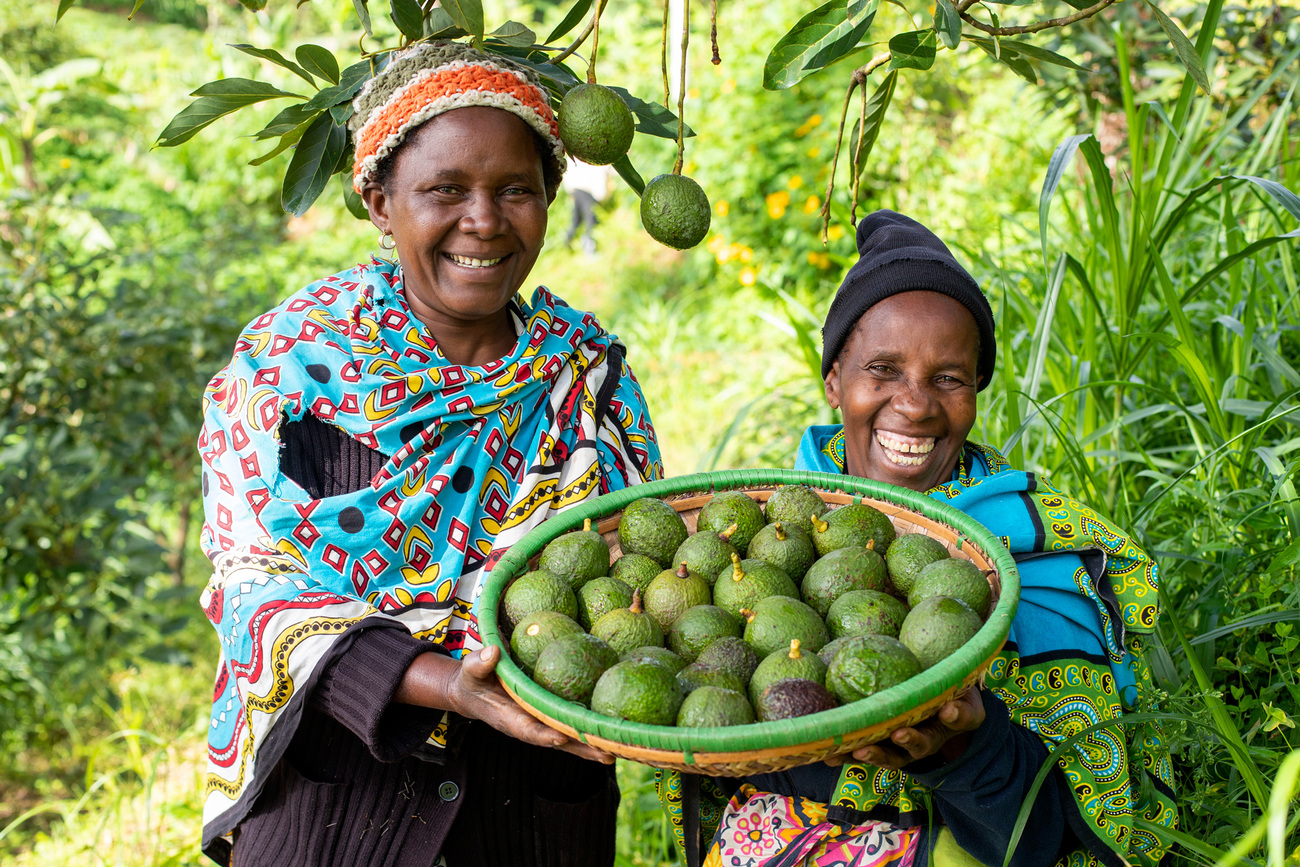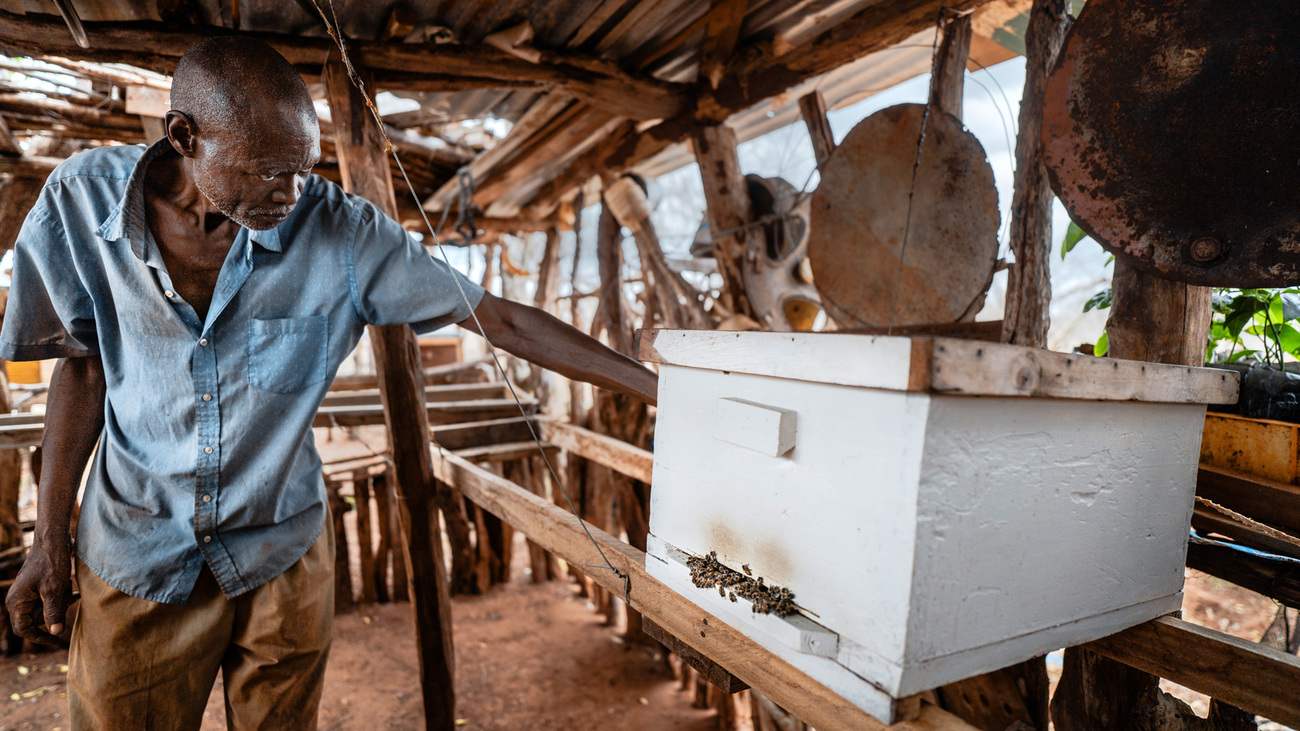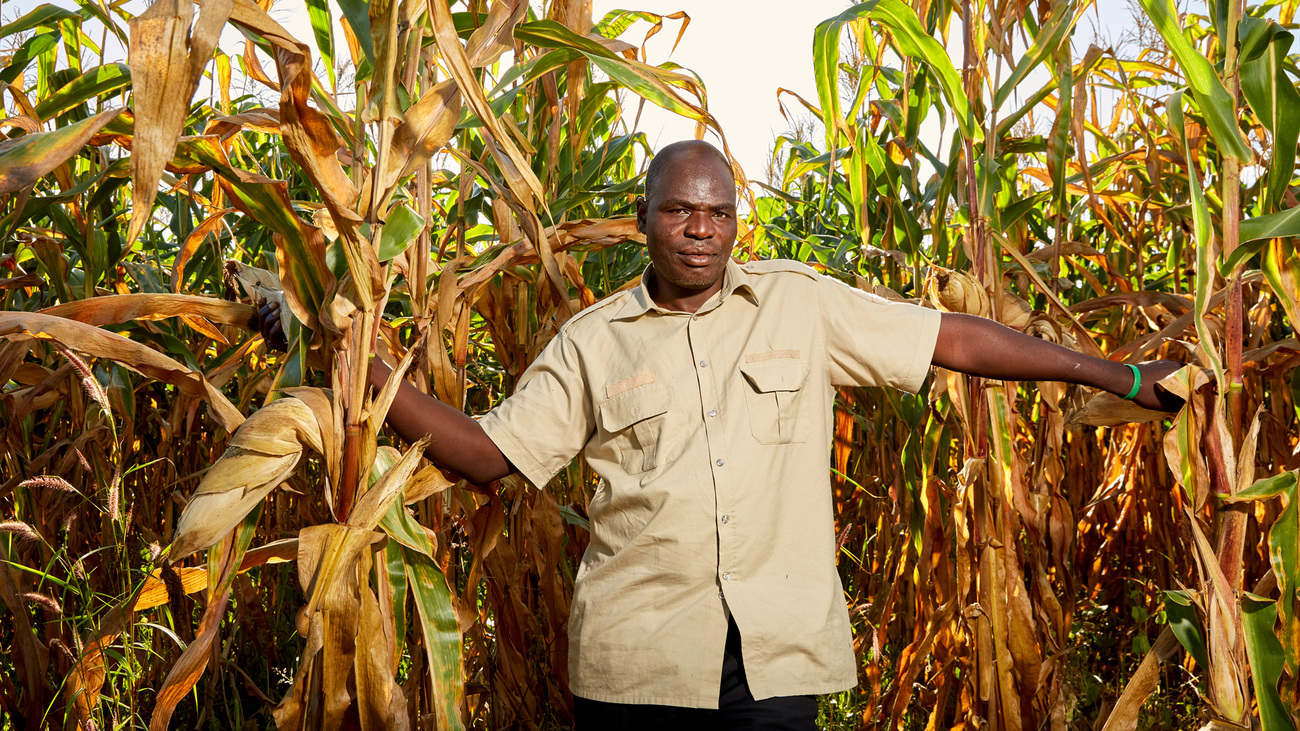Climate-smart farming: How sustainable agriculture can help animals and the planet
Climate-smart farming: How sustainable agriculture can help animals and the planet
Did you know that greenhouse gas emissions from the agricultural industry are one of the top contributors to climate change?
A 2021 study found that a staggering 7.1 billion tonnes of CO2 emissions came from agricultural production, with a further 5.7 billion tonnes of CO2e from land use for agriculture. To better understand the scale of these emissions—it’s estimated that around 22% of global greenhouse gas emissions can be attributed to agriculture, forestry, and other land use.

With agriculture so significantly impacting climate change, finding a more sustainable approach to farming practices plays a vital role in climate change mitigation strategies.
Climate-smart farming, also known as climate-smart agriculture, presents an opportunity to cut the emissions produced by the agricultural industry, support wildlife conservation, mitigate climate change, provide sustainable livelihoods for communities, and ensure food security for future generations.
At IFAW, we’re working globally to promote climate-smart conservation practices that benefit wildlife and people. IFAW’s Room to Roam initiative includes a focus on climate-smart agriculture, which is already improving the livelihood and food security of over 5,000 smallholder farmers based in the Malawi–Zambia Transfrontier Conservation Area (TFCA), with the help of COMACO, and working with the over 3,000 community members of Kasigau Conservancy in Kenya.
With the devastating effects of extreme drought in southern Africa placing more than 61 million people into an emergency food aid situation in 2024, it’s clear that we need to adopt approaches that make agriculture more resilient to human-induced climate change.
What is climate-smart farming?
Climate-smart farming is an approach to farming and agricultural practices that considers the impacts of climate change and actively works to create a more sustainable and resilient food system. These methods aim to sustainably increase agricultural productivity, build resilience against climate shocks, and reduce greenhouse gas emissions.
First introduced in 2010 by the Food and Agriculture Organisation (FAO) of the United Nations, climate-smart farming focuses on making agriculture adaptable to today’s climate challenges while securing food sources for tomorrow.
Climate-smart agriculture has three primary goals:
- Increased productivity: sustainably intensifying agricultural production to meet the needs of a growing population
- Enhanced resilience: adapting farming systems to withstand the impacts of climate change
- Reduced emissions: mitigating greenhouse gas emissions produced by agricultural activities
Climate-smart agriculture strategies must be tailored to each region’s specific environmental, social, and economic contexts—what works in one area may not necessarily work in another.
Attaining these three goals is also dependent on regional factors. It may be more important to increase agricultural output in some areas, while in others, building resilience against severe weather and disasters is more of a priority.
Climate-smart farming strategies must consider local ecosystems and climate patterns to create agricultural solutions that work with, not against, nature. It is also vital that climate-smart agriculture initiatives are community-led, implemented by and benefitting the farmers who adopt them.
How does climate-smart agriculture work?

Higher temperatures, changes in rainfall patterns, rising sea levels, and more frequent extreme weather events pose a massive risk to food and water security in many countries, and poverty and vulnerability are linked to higher risks for wildlife and biodiversity. Climate-smart farming isn’t just about increasing food productivity—it’s about ensuring that local communities and ecosystems can continue to operate and thrive in the face of growing environmental pressures.
In addition to specific agricultural techniques, climate-smart agriculture also includes managing food systems, landscapes, value chains, and farming policies. Enabling communities to lead this work, utilising their knowledge of the landscapes, is crucial.
Here are some of the key techniques and strategies used in climate-smart agriculture.
Planting climate-resilient crop varieties
One of the foundational techniques of climate-smart agriculture is growing crops that are more resilient to extreme weather conditions such as droughts, heatwaves, or floods. Selective breeding of crop varieties that can withstand environmental fluctuations while maintaining high yields can reduce the risk of crop failure and ensure food security locally and globally. Examples of such crops are drought-resistant maize and flood-tolerant rice varieties.
Agroforestry
Agroforestry combines agriculture and forestry by integrating trees into farms and agricultural landscapes. This helps improve soil fertility, provides shade, and reduces erosion. Additionally, planting trees helps sequester carbon from the atmosphere, makes the land more robust, and provides habitats to wildlife—creating more biodiverse and healthier ecosystems.
Precision farming
Precision farming uses advanced technology, such as satellite imagery and GPS, to optimise the use of water, fertilisers, and pesticides. This approach allows farmers to monitor their farms in real time and apply resources where they’re needed, reducing waste and environmental damage. Precision farming can also reduce greenhouse gas emissions and pesticide runoff, which often pollutes water supplies and harms local wildlife.
Water management strategies
Precision/drip irrigation and rainwater collection help make water consumption more efficient. In times of severe drought or erratic precipitation, these methods ensure that crops receive enough water without wasting it. Farmers can use technology to measure surface and root zone soil moisture and rainfall data to improve decision-making about watering. Farmers can reduce their reliance on local water sources by using water more efficiently, which also benefits wildlife that depend on the same natural water sources.
Improved livestock management
Livestock farming contributes a significant amount to greenhouse gas emissions, but climate-smart techniques aim to reduce the environmental impact of raising farm animals. Sustainable livestock management encompasses improved nutrition, efficient feeding, and reduced waste. Under climate-smart agriculture, farmers can use rotational grazing, specialised feed formulations, and efficient manure management to reduce methane emissions from their livestock. These practices not only help to mitigate climate change but also improve the welfare of farmed animals.
Integrated pest management
Rather than relying solely on chemical pesticides, integrated pest management uses a combination of biological, mechanical, and chemical methods to control pests, weeds, and diseases. This reduces the harmful impacts of pesticides on the environment, protects non-target species that could be affected by pesticides, and supports biodiversity.
Nutrient management
Nutrient management focuses on optimising the use of fertilisers to improve crop yields while minimising environmental damage. By ensuring that crops get the nutrients they need without over-applying fertilisers, this technique can reduce runoff that pollutes the environment and lower greenhouse gas emissions from the production and application of fertilisers. The methods used in climate-smart farming for increasing soil fertility include using organic fertilisers, precision fertilising, and crop rotation.
Education and awareness raising
To promote climate-smart farming, farmers and local communities need to be equipped with the knowledge and skills to adopt sustainable practices. Education and training programmes help farmers adopt new technologies and approaches that improve productivity, resilience, and sustainability.
How climate-smart agriculture helps animals and the planet
Climate-smart agriculture not only benefits farmers and local communities. It also has significant positive impacts on wildlife and the environment. Here are some of the main benefits:
- Improved crop yields: By using these proven techniques, farmers can increase their productivity, growing more food while using fewer resources.
- Reduced greenhouse emissions: Climate-smart farming techniques, such as improved livestock management and precision farming, release fewer greenhouse gases like methane and carbon dioxide into the atmosphere.
- Reduced pollution: Integrated pest management and nutrient management help reduce the use of synthetic and harmful chemicals, preventing runoff and the pollution of water sources, which can impact local communities and wildlife.
- Resilience to climate-related challenges: By building resilience to extreme weather events such as droughts and floods, climate-smart farming helps ensure long-term food and financial security for local communities—which also has a knock-on effect on a global scale.
- Preserving biodiversity: Many climate-smart farming techniques, such as agroforestry and water management, promote plant, crop, and animal biodiversity by protecting habitats and creating more diverse agricultural landscapes.
- Higher incomes: Improved productivity and resilience can lead to higher income for farmers, especially smallholders, improving their quality of life and reducing poverty.
- Reduced impacts on ecosystems and wildlife: By working in harmony with ecosystems, climate-smart farming reduces the negative effects of agriculture on wildlife, helping conserve species and protect biodiversity.
How IFAW supports climate-smart farming
IFAW works to promote climate-smart agriculture as part of our broader climate-smart conservation strategy.

Historically, climate change was not considered in the conservation of animals or ecosystems. But recently, it has become increasingly clear that climate change threatens the extinction of hundreds of thousands of species. Climate-smart conservation helps wildlife, ecosystems, and communities adapt and thrive despite climate challenges. It can also play a key role in the mitigation of climate change.
Key climate-smart conservation principles include:
- Linking actions to impacts
- Creating future-facing goals
- Taking a holistic approach
- Designing flexible and adaptable approaches
- Doing no harm
Here are some examples of our climate-smart conservation and agriculture work.
Climate-smart agriculture in Kenya
Within Kenya’s Amboseli and Tsavo landscapes, wildlife often competes with people and livestock for food and water sources, resulting in heightened human-wildlife conflict. Climate change-induced droughts only exacerbate these incidents of conflict. Funded by USAID and in partnership with Big Life Foundation and Tsavo Trust, IFAW is helping develop climate-smart agriculture in the region, among other initiatives. Not only will this help spread resources among humans and wildlife, but it will also improve economic activity in the area. This project has secured more than 90,128 people and their livelihoods through reduced human-wildlife conflict and more conservation-compatible income opportunities.
Promoting women in climate-smart farming
Across Kenya, Malawi, China, and other countries, IFAW has offered vocational training to women in climate-resilient jobs. This encompasses climate-smart farming, which provides greater food and financial security and the ability to adapt to the changing climate. Empowered with this education, women and their communities can begin to reverse the damage to ecosystems brought on by traditional agricultural practices, making them more resilient to the effects of climate change.
Climate-smart farming presents a powerful solution to some of the most pressing challenges we face today: climate change, food security, and wildlife conservation. By promoting sustainable practices that benefit both people and the planet, climate-smart agriculture creates a more resilient and prosperous future for all.
Learn more about IFAW’s climate initiative and our broader conservation efforts.
Related content
Our work can’t get done without you. Please give what you can to help animals thrive.